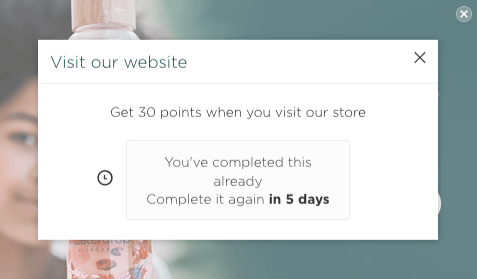Looking for ways to improve your Black Friday campaign in 2022? While we still love the blog below, you might be more interested in reading our recent research, The Black Friday Blueprint.
Read some of the key statistics and advice.
There’s no denying that Covid-19 has accelerated the growth of ecommerce. With the holiday season looming, the question is what will happen around Black Friday Cyber Monday (BFCM) in this turbulent year?
The massive shift towards online sales this year means Black Friday has the capacity to be bigger than ever before. 53% of seasonal shoppers will actively look for deals and discounts, and 36% are waiting until sales start to purchase a particular item. While physical stores are closed, there’s still demand for deals and sales online.
What are the key psychological principles that BFCM taps into?
Customers shop because a Black Friday deal is inherently scarce. The opportunity is lost after a day or two. We are also driven by social proof, which is heavily reinforced by social media. Seeing friends post about deals or chatting about bargains prompts people to go out and buy themselves.
Despite the uncertainty of what exactly 2020 might bring in regards to BFCM, businesses should be preparing for a boom. This means having attractive deals and sales-ready to roll out. And making sure that there is sufficient infrastructure to deal with larger than average visitor numbers to your website.
Ensuring that your ecommerce business is optimized, secure and reliable is essential to giving shoppers a brilliant experience this BFCM.
The psychology of customer experience
Did you know that there’s a physiological reason why, when presented with a sale, we tend to lose all self-control?
We have structures called “reward systems” in our brains. Whenever these structures are activated, different neurons are triggered. These stimulate pleasant feelings to the expense of everything else. With words like “sale” or “deal”, the reward system is activated. The regions in our brain which would usually rationalize whether a purchase is necessary are barely active at this point; hence customers grabbing and buying with little forethought.
As well as triggering words, such as “sale”, there is a sense of urgency created around BFCM through the marketing that surrounds it. Messages push shoppers into making snap decisions.
Now that we’ve looked at why shoppers are triggered by seasonal sales, we’ll explore the different psychological behaviors will be present and how you can capitalize on them.
1. FOMO (Fear of missing out)
FOMO – or fear of missing out – is rife over BFCM. With sales being limited and shoppers flooding sites to find the best deals, customers don’t want to miss out. They also want to steer clear of paying more for the same item in the run-up to Christmas.
Play up to FOMO by creating a sense of urgency and exclusivity around your sales. This can be done using your marketing language. Make sure you provide updates on limited stock availability and offer frequent reminders about when the sale ends.
With a loyalty program, you can welcome customers into your VIP community where you can give them early access to sales. This makes customers feel valued as a member of your community.
You can also use your program to give special perks such as free gifts when they spend a certain amount. New customers will experience FOMO and be encouraged to sign up for the program. You can then re-engage them all year long.

2. Dopamine rush
The time-sensitive sales messages we see over Black Friday aid the release of one particular neurochemical: dopamine. Primarily, dopamine is triggered by novelty, i.e. the rush of making a purchase or scoring a bargain.
Make customers feel more positively towards your brand by giving them more value for every purchase.
Through a loyalty program, gift additional points for BFCM purchases which shoppers can then use to claim free gifts. For example, Waterdrop offers the exchange of points for free products, including their limited edition bags and water bottles.

3. Social shoppers will be prevalent
Psychology researchers have found people typically fall into one of two groups. Those who focus more on achieving tasks versus those who focus on making connections with others.
Task-oriented shoppers typically focus on finding the things they need quickly and with the least amount of effort. Socially oriented shoppers, on the other hand, enjoy the presence of others while they shop.
Task-oriented shoppers are more likely to find other people nearby to be an obstacle to a successful shopping trip. However, social shoppers are energized by the presence of other consumers and enjoy the experience when there are others nearby.
Our research showed that the latter type of shopper loves sharing their BFCM shopping experience with others. This year,
- 39% will spend more time browsing social
- 38% will refer friends
- 33% will leave more reviews this BFCM20
Try to encourage more social shopping by rewarding existing customers for referring their friends to your store. This means you’ll acquire more high-intent shoppers during this critical period.
The clothing brand, Taylor Stitch, offer a “Give 20%, Get $20” deal where both the advocate and the referred shopper benefits.
Understanding customer psychology – why people are triggered by sales and the behavioral habits of certain shoppers – and then responding to it, will help you drive success from holiday shoppers this year. Lean into that addictive dopamine rush, identify your social shoppers and play up to FOMO.





